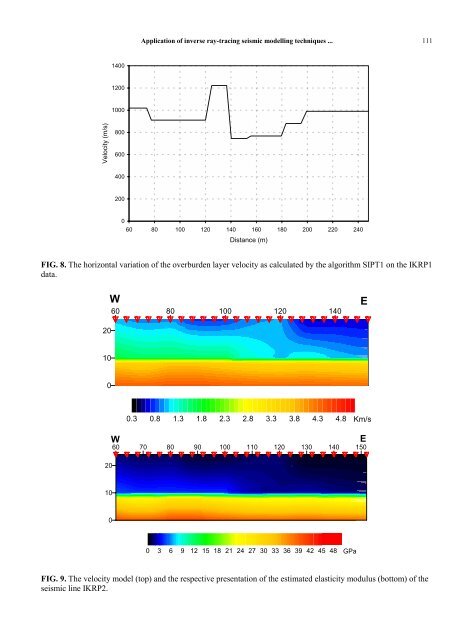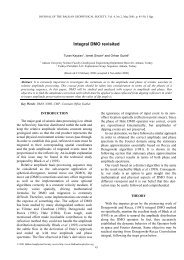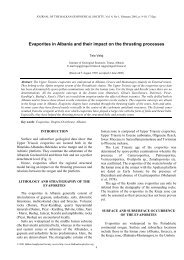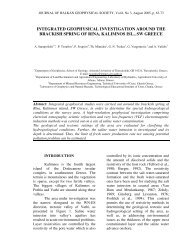Application of inverse ray-tracing seismic modelling techniques
Application of inverse ray-tracing seismic modelling techniques
Application of inverse ray-tracing seismic modelling techniques
You also want an ePaper? Increase the reach of your titles
YUMPU automatically turns print PDFs into web optimized ePapers that Google loves.
<strong>Application</strong> <strong>of</strong> <strong>inverse</strong> <strong>ray</strong>-<strong>tracing</strong> <strong>seismic</strong> <strong>modelling</strong> <strong>techniques</strong> ... 111<br />
1400<br />
1200<br />
1000<br />
Velocity (m/s)<br />
800<br />
600<br />
400<br />
200<br />
0<br />
60 80 100 120 140 160 180 200 220 240<br />
Distance (m)<br />
FIG. 8. The horizontal variation <strong>of</strong> the overburden layer velocity as calculated by the algorithm SIPT1 on the IKRP1<br />
data.<br />
W<br />
60 80 100 120 140<br />
E<br />
20<br />
10<br />
0<br />
0.3 0.8 1.3 1.8 2.3 2.8 3.3 3.8 4.3 4.8<br />
Km/s<br />
20<br />
W<br />
60 70 80 90 100 110 120 130 140 150<br />
E<br />
10<br />
0<br />
0 3 6 9 12 15 18 21 24 27 30 33 36 39 42 45 48<br />
GPa<br />
FIG. 9. The velocity model (top) and the respective presentation <strong>of</strong> the estimated elasticity modulus (bottom) <strong>of</strong> the<br />
<strong>seismic</strong> line IKRP2.








